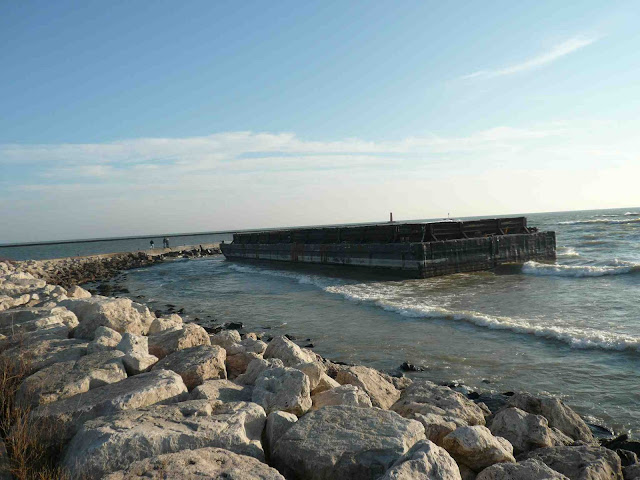Press Release from KVH Industries
30 November 2011
MIDDLETOWN, RI — The TracPhone® V3 from KVH Industries, Inc., (Nasdaq:
KVHI) created a stir in the maritime communications market when it was
introduced in February 2011 due to its small size, fast data rates, and
affordable service. Now it's been honored with two prestigious awards for those
same features — the product was chosen for the "Spotlight on New Technology" at
the Louisiana Gulf Coast Oil Expedition (LAGCOE) and received the Providence
Business News' 2011 Innovation of the Year award at a ceremony in Rhode Island,
where KVH's world headquarters is located.
"For years, mariners using satellite communications services at sea have
struggled to avoid prohibitively high airtime bills. Several years ago, we saw
an opportunity to help resolve this issue with modern technology that would
reduce the size and cost of maritime satellite communications equipment, and we
built our own spread spectrum satellite network to offer fast, affordable
service on a global basis using a 24" antenna. In February of this year, we
introduced the next generation of this unique, end-to-end hardware and service
solution with the 14.5" TracPhone V3 antenna, bringing reliable satellite
communications to a whole new population of mariners," explains Martin Kits van
Heyningen, KVH's chief executive officer. "We're delighted that the benefits of
our new product are being recognized with state and national awards."
KVH is known for its innovative approach to technology, especially in the
maritime market. The mini-VSAT Broadband network's popularity with commercial
mariners, like those who work in the oil and gas industry and attended KVH's
Spotlight on Technology presentation at LAGCOE, is based on a long history of
reliability and quality in all of KVH's products, from digital compasses to
satellite TV systems to its global satellite communications service. That
reputation has been good for business worldwide and for the economy in Rhode
Island, where KVH got its start and where its world headquarters is located.
"Over the past several years, KVH has remained a bright spot in the Rhode
Island economy," said Mark S. Murphy, editor of Providence Business News, as he
presented the Innovation of the Year award. "KVH's innovative products mean that
we can check e-mail, call home, manage our businesses, and even watch the Red
Sox right from our boats."
The TracPhone V3 is licensed by the U.S. Federal Communications Commission
(FCC) and includes a fully stabilized, 14.5" (37 cm) antenna that weighs just 25
pounds, a powerful ViaSat ArcLight® spread spectrum modem, and a sleek antenna
control unit that are all fully integrated and configured for easy installation.
ArcLight spread spectrum technology enables very small antennas like KVH's
TracPhone V3 to receive satellite transmissions with the speed and reliability
of older, 1-meter VSAT antennas that use the TDMA transmission schemes
originally designed for terrestrial use. KVH's high-efficiency RingFire™ antenna
design and dielectric feed rod technology combine to help the TracPhone V3 offer
great performance, even in poor weather, and its rugged, lightweight design is
perfect for use on leisure and commercial vessels as small as 30 feet.
With more than 1,500 antenna systems shipped and global coverage, KVH's
mini-VSAT BroadbandSM network is the world's largest and fastest growing
maritime Ku-band satellite communications network. A managed airtime network
solution, it equips vessels with true broadband connections as well as Voice
over IP (VoIP) telephone lines with optimized service and prioritization of
applications.
About KVH Industries, Inc.
KVH Industries, Inc., is the leading provider of in-motion satellite TV and
communication systems, having designed, manufactured, and sold more than 150,000
mobile satellite antennas for applications on vessels, vehicles, and aircraft.
KVH's mission is to connect mobile customers around the globe with the same
digital television entertainment, communications, and Internet services that
they enjoy in their homes and offices. The company is based in Middletown, RI,
with facilities in Illinois, Denmark, Norway, and Singapore.
___
This release may contain certain forward-looking statements that
involve risks and uncertainties. Forward-looking statements include, for
example, the functionality, characteristics, quality and performance of KVH's
products and technology; anticipated innovation and product development; and
customer preferences, requirements and expectations. The actual results could
differ materially. Factors that may cause such differences include, among
others, those discussed in KVH's most recent Form 10-Q filed with the SEC. KVH
does not assume any obligation to update its forward-looking statements to
reflect new information or developments. KVH, TracPhone, and RingFire are
trademarks of KVH Industries, Inc. "mini-VSAT Broadband" is a service mark of
KVH Industries, Inc. All other trademarks are the property of their respective
companies.



